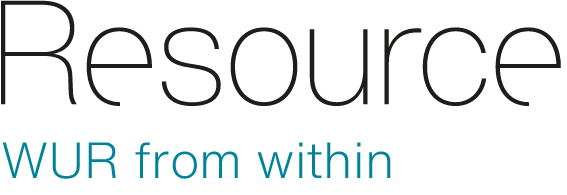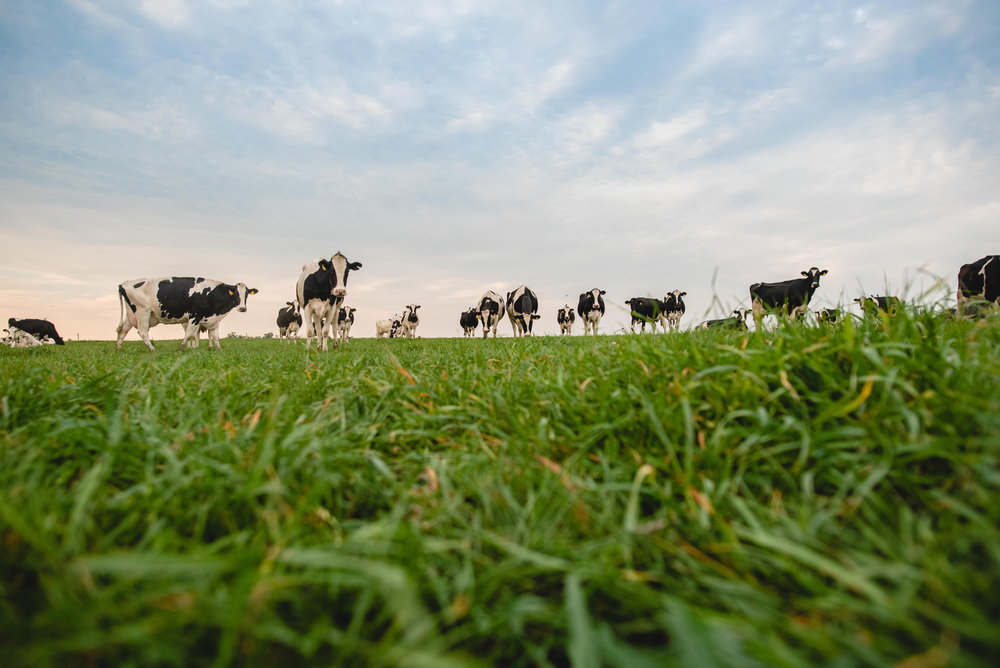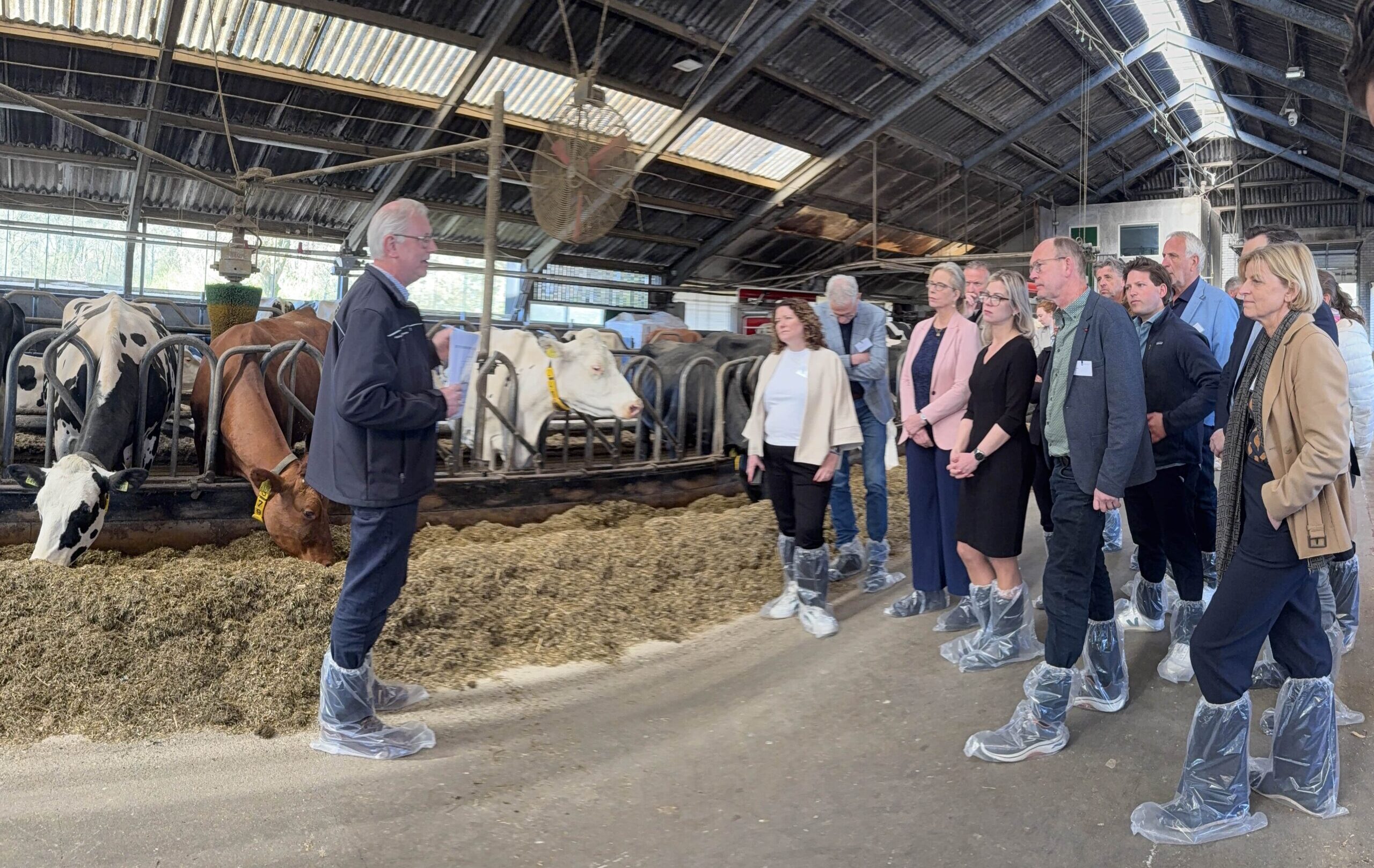Gerard Ros, Wim de Vries, Roel Jongeneel and Martin van Ittersum have published a new vision statement describing how business-specific goal steering can ensure the Netherlands achieves its statutory goals for climate, nature and water quality in agriculture. The statement is eagerly awaited in The Hague, among others, says De Vries.
The new article follows up on their previous publication in which they called for specific goals at a business level to encourage farmers to reduce their nitrogen and methane emissions. The CPIs (Critical Performance Indicators) are derived from the national targets for agriculture.
This new essay further details how this business-specific goal steering should be implemented to be viable in a farm setting while also achieving the results needed to achieve the statutory goals. Hence, the article was eagerly awaited. ‘Also in The Hague’, says De Vries.
Carrot and stick
The piece argues that there are four key questions when transitioning to business-specific goal steering. First, which forms of goal steering are the most effective? Goal steering can be achieved ‘both through the stick and the carrot’, De Vries explained in an earlier interview in Resource. For targets such as biodiversity, soil quality, landscape and the quality of surface water, the call for a “carrot-based approach”. That is, rewarding farmers for specific achievements that must, in some cases, be measurable.
The considerable and urgent goals for ammonia and nature and climate and groundwater quality, however, call for a more stringent approach. Hence, they call for a gradual transition towards standards that are enforced through (financial) consequences if farmers fail to meet them. They also do not exclude such options and the implementation of standards in combination with pricing, such as, for example, tradeable emission rights. This, after all, provides a financial incentive to become more sustainable.
Business-specific CPIs
The second key question is how the national goals are translated into business-specific CPIs and what factors should be included. Examples include soil quality and measure of land-dependency. The authors have performed calculations for several possible paths, including one with the same reduction goals for land-bound and non-land-bound sectors and one where the non-land-bound sectors have higher reduction goals. ‘Which option, or combination of options, is eventually implemented is a political choice’, they state.
Measuring and calculating
The third key question is how one may practicably and dependably measure or calculate to what degree a farm business meets its CPIs. Measuring emissions everywhere, both in the field and the barn, is not achievable, and calculations are not foolproof either. They occasionally lack a legal basis. Ros and his colleagues call for a combination of a simple calculating tool linked to existing calculating methods, such as the KringloopWijzer, with some relatively easy-to-measure indicators, such as the nitrogen and phosphor ratio in manure and the levels of urea in milk*. ‘Combined with sensor readings taken at a few representative businesses which provide insight into the ammonia emissions from barns’, they write. They believe that there is a legal basis for using a calculating tool if the law demands it.
* The urea content in milk is an indicator of ammonia emissions in dairy cattle urine. The higher the urea content, the more nitrogen in the urine. Urea is a compound containing nitrogen, which results from protein metabolism. If the cow’s rations contain a protein surplus, the body will convert the excess nitrogen (each protein molecule contains nitrogen atoms) into urea, which is excreted through the urine by way of the kidneys. A small portion of the urea makes its way into the milk through the blood.
Ball in administration’s court
The fourth and final question the authors address is that of implementing and legally underpinning measures. Agricultural businesses need to be able to prove with invoices, photographs or measurements that they are operating within the legal standards by adjusting their business operation (fewer cattle or a larger land area) or by correctly applying measures to reduce emissions. The new environmental law provides numerous legal powers and instruments that enable administrations to enforce measures to ensure nature and environmental laws. Nonetheless, strategic decisions are needed to ensure emissions are genuinely reduced. For example, on goals (what can be achieved where?), steps (within how many years must the goal be achieved), how innovations are weighted in the granting of permits and, finally, controlling and enforcing. That ball, however, is in the (local) administration’s court.

 This new article details what viable business-specific goal steering should look like to achieve sufficient results and be implementable in an agricultural business. Photo Shutterstock
This new article details what viable business-specific goal steering should look like to achieve sufficient results and be implementable in an agricultural business. Photo Shutterstock 

